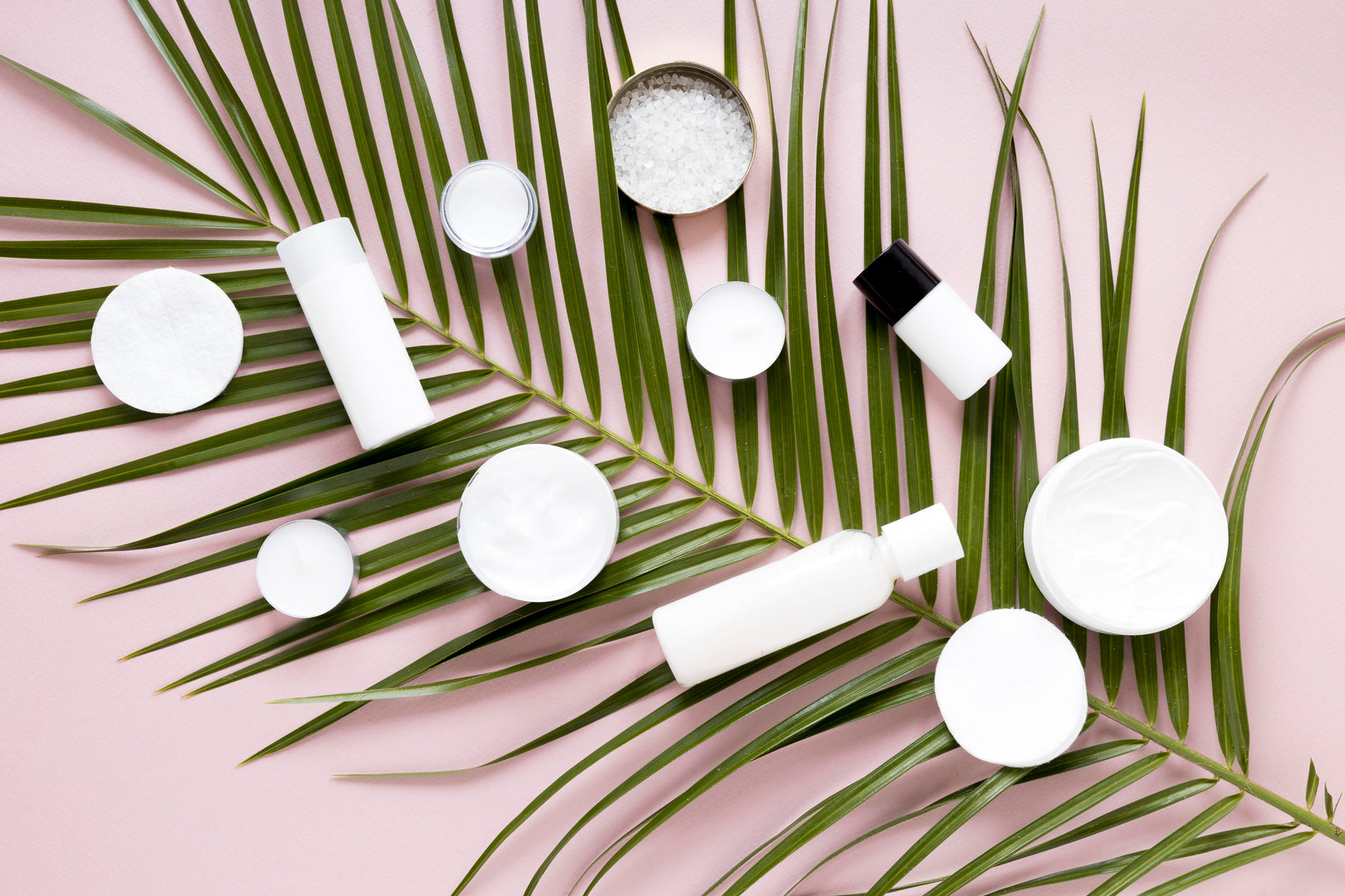Table of Contents
Introduction
Have you ever noticed how your skin's texture and brightness can change with the seasons? Just like the moon, our skin goes through phases, and sometimes it needs a little extra care to glow. One of the most effective ingredients we can turn to during these phases is glycolic acid. Known as the "King of chemical exfoliants," glycolic acid is a powerhouse ingredient that offers numerous benefits for our skin.
At Moon and Skin, we believe in clean and thoughtful formulations that enhance and celebrate your skin at every stage of life. Today, we're diving deep into the world of glycolic acid, exploring its benefits, how to use it, and why it might just become a staple in your skincare routine.
Glycolic acid, a type of alpha hydroxy acid (AHA), is derived from sugarcane and is renowned for its ability to exfoliate the skin gently yet effectively. With its small molecular structure, glycolic acid penetrates the skin more deeply than other AHAs, making it exceptionally effective. Throughout this post, we’ll illuminate the myriad benefits of glycolic acid, delve into potential side effects, and guide you on how to incorporate it into your skincare regimen while maintaining harmony with nature, as we do at Moon and Skin.
Let’s embark on this journey together and understand how glycolic acid can transform your skin.
What is Glycolic Acid?
Glycolic acid is a naturally occurring substance found in sugarcane, fruits, and certain plants. As an AHA, it is water-soluble, which allows it to work primarily on the skin's surface. Its primary function is to exfoliate, helping to dissolve the bonds that hold dead skin cells together. By promoting cell turnover, glycolic acid reveals fresher, healthier skin underneath.
Properties of Glycolic Acid
- Exfoliating: Glycolic acid effectively removes the outer layer of dead skin cells, leading to a smoother skin texture.
- Humectant: It attracts moisture to the skin, enhancing hydration levels.
- Anti-aging: Glycolic acid can stimulate collagen production, which helps maintain skin elasticity and firmness.
- Brightening: It can improve skin tone and reduce the appearance of dark spots and hyperpigmentation.
These properties make glycolic acid a versatile ingredient that can address various skin concerns, from acne to aging.
Benefits of Glycolic Acid for Skin
1. Exfoliation and Smoother Texture
One of the most celebrated benefits of glycolic acid is its ability to exfoliate the skin. Regular use can prevent the buildup of dead skin cells, which often leads to dullness and rough texture. By incorporating glycolic acid into your routine, you can enjoy a smoother and more radiant complexion.
Key takeaway: Glycolic acid helps to dissolve dead skin cells, promoting a softer skin texture.
2. Boosting Collagen Production
Collagen is essential for youthful-looking skin, as it provides structure and elasticity. Glycolic acid has been shown to stimulate collagen production, making it a valuable ingredient in anti-aging skincare. As we age, collagen production naturally decreases, leading to fine lines and wrinkles. Glycolic acid can help counteract these effects and promote a firmer appearance.
Key takeaway: Glycolic acid encourages collagen synthesis, reducing the signs of aging.
3. Treating Acne and Unclogging Pores
For those struggling with acne, glycolic acid can be a game-changer. Its exfoliating properties help unclog pores and prevent the buildup of dead skin cells that can lead to breakouts. Additionally, glycolic acid can reduce inflammation and promote healing, making it a beneficial ingredient for acne-prone skin.
Key takeaway: Glycolic acid helps clear pores and reduces acne breakouts.
4. Brightening and Evening Skin Tone
Hyperpigmentation and uneven skin tone can be frustrating. Glycolic acid can help lighten dark spots and improve overall skin tone by promoting the shedding of pigmented cells. This means that with consistent use, you can achieve a more even and luminous complexion.
Key takeaway: Glycolic acid brightens the skin and helps even out discoloration.
5. Hydration and Moisture Retention
While glycolic acid is primarily known for its exfoliating properties, it also acts as a humectant. This means it attracts moisture to the skin, enhancing hydration levels. When used correctly, glycolic acid can leave your skin feeling plump and hydrated.
Key takeaway: Glycolic acid enhances moisture retention, leading to hydrated, glowing skin.
How to Use Glycolic Acid in Your Skincare Routine
Incorporating glycolic acid into your skincare routine can seem daunting, but it doesn’t have to be. Here are some practical tips to help you get started:
Start Slowly
For those new to glycolic acid, we recommend beginning with a lower concentration product. Starting with a glycolic acid serum or toner containing around 5-10% glycolic acid is ideal. Use it 2-3 times a week to allow your skin to acclimate. As your skin becomes accustomed to the ingredient, you can gradually increase frequency.
Follow with Hydration
After applying glycolic acid, it’s essential to follow up with a hydrating serum or moisturizer. Our Hyaluronic Brightening Moisturizer is an excellent option, as it deeply hydrates while enhancing the brightening effects of glycolic acid.
Combine with Sunscreen
Because glycolic acid can increase your skin's sensitivity to the sun, using a broad-spectrum sunscreen daily is crucial. We recommend applying SPF 30 or higher, especially if you plan on using glycolic acid in the morning.
Avoid Mixing with Certain Ingredients
To minimize irritation, avoid using glycolic acid with potent exfoliants like retinol or salicylic acid in the same routine. Instead, alternate their use for optimal results. For example, you could use glycolic acid in your evening routine and retinol on alternate nights.
Potential Side Effects of Glycolic Acid
While glycolic acid is generally safe for most skin types, some individuals may experience side effects, especially those with sensitive skin. Common side effects can include:
- Redness and irritation
- Dryness and peeling
- Increased sensitivity to sunlight
If you experience any of these symptoms, consider reducing the frequency of use or opting for a lower concentration product. It’s essential to listen to your skin and adjust your routine accordingly.
Choosing the Right Glycolic Acid Product
When selecting a glycolic acid product, consider the following factors:
- Concentration: Start with a lower concentration (5-10%) and work your way up.
- Formulation: Look for products that also contain hydrating ingredients to counteract potential dryness.
- Purpose: Choose a product based on your primary skin concern—whether it’s acne, anti-aging, or brightening.
Our Best Sellers collection features some fantastic options for incorporating glycolic acid into your routine, including serums and exfoliants designed to target various skin concerns.
Conclusion
Glycolic acid is a versatile and powerful ingredient that can transform your skincare routine. By understanding its benefits and how to use it effectively, you can embrace smoother, brighter, and healthier-looking skin. At Moon and Skin, we’re committed to empowering you with the knowledge you need to make informed skincare choices.
If you're ready to experience the benefits of glycolic acid for yourself, consider exploring our Bundle & Save collection. Together, we can create a comprehensive skincare routine that supports your skin throughout every phase of life.
FAQ
1. Can I use glycolic acid daily?
While some people can tolerate daily use, it's best to start with 2-3 times a week and gradually increase frequency based on your skin's response.
2. Is glycolic acid suitable for sensitive skin?
Those with sensitive skin should start with a lower concentration and monitor their skin’s reaction. If irritation occurs, reduce frequency or switch to a gentler product.
3. Can I use glycolic acid with other active ingredients?
Avoid using glycolic acid simultaneously with strong exfoliants like retinoids or benzoyl peroxide to minimize irritation. You can alternate their use for optimal results.
4. How long does it take to see results from glycolic acid?
Results can vary, but many users notice improvements in skin texture and brightness within a few weeks of consistent use.
5. Do I need to use sunscreen when using glycolic acid?
Yes, because glycolic acid can increase your skin's sensitivity to the sun, wearing a broad-spectrum sunscreen daily is essential to protect your skin.
Embrace the transformative power of glycolic acid, and let your skin shine through every phase of its journey!







